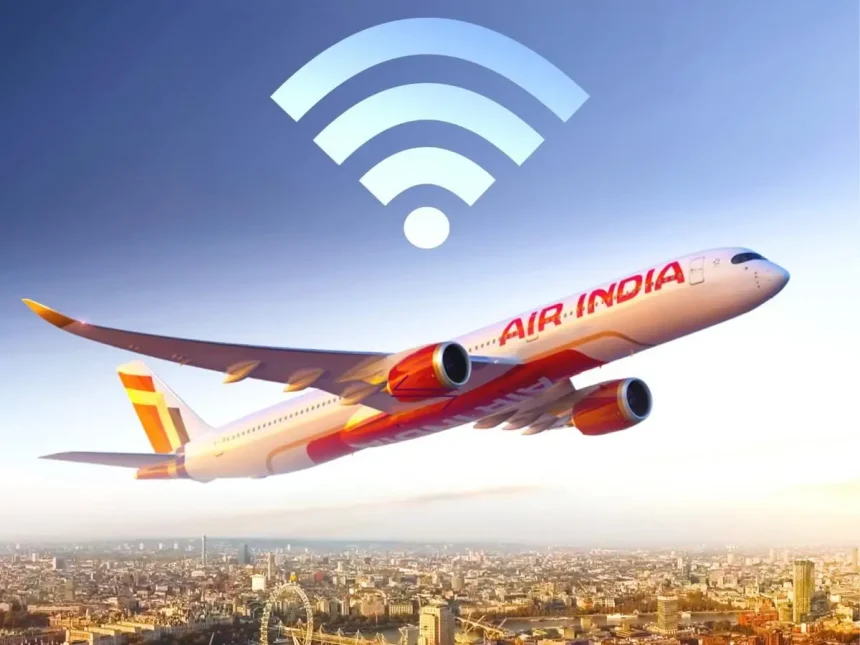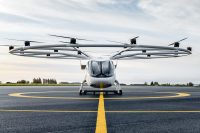Air India, a government-established and Tata-led airline in India, has now added free internet service to its flights. This will help passengers stay updated on their virtual work, scroll social media, or exchange messages with their related ones.
Air India has made a significant move in the aviation sector by introducing free Wi-Fi on domestic as well as international flights, hence becoming the first airline in India to offer this service on domestic routes. This initiative is part of a pilot program aimed at enhancing passenger experience and expanding connectivity options. Currently, the service is available on specific aircraft, including the Airbus A350, Boeing 787-9, and some Airbus A321 models 1.
Technology Used:
The Wi-Fi service relies on two primary technologies: air-to-ground and satellite-based systems.
The air-to-ground system utilizes signals from towers on the ground, while the satellite-based technology offers better coverage over oceans and remote areas.
Accessing Wi-Fi:
Passengers can connect to the Air India Wi-Fi network and must enter their details on a portal to access the internet. This setup allows for browsing while in-flight.
Cost and Future Plans:
Currently, the service is free for passengers on select domestic flights for a limited time. However, it is uncertain how long this complimentary service will last before potential charges are introduced.
Air India plans to extend this service across more of its fleet, setting a new standard in the Indian aviation industry and potentially influencing other airlines to follow suit.
Air India’s initiative to roll out free Wi-Fi on domestic flights marks a pivotal change in the Indian aviation landscape. Internet service can be accessible in other international flights but in the case of domestic flights, it is a rare and significant initiative for locals of the country. By offering this service at no extra cost, the airline is not only enhancing customer satisfaction but also positioning itself as a leader in inflight connectivity. The success of this program may encourage other airlines to adopt similar offerings in the future.
What is the statement of Air India about its Wi-Fi service?
“Wi-Fi is complimentary for an introductory period and will progressively roll out on other aircraft in the fleet over time. It will enable passengers to browse, access social media, catch up on work, or text friends and family,” – the Tata Group company said TOI.
In the recent blog post, Rajesh Dogra the Chief Customer Experience Officer at Air India wrote: “Connectivity is now an integral part of modern travel. For some, it is about the convenience and comfort of real-time sharing, while for others, it is about greater productivity and efficiency. Whatever be one’s purpose, we are confident that our guests will appreciate having the option of connecting to the web and enjoy the new Air India experience on board these aircraft.”
How does in-flight wifi works?
In-flight Wi-Fi works through antennas installed on the aircraft, which establish a connection with either ground-based cell towers or satellites:
Air-To-Ground Uses antennas on the plane to capture signals from ground-based cellphone towers. Similar to how your smartphone connects to the nearest cell tower, the airplane’s antenna continuously switches between towers as it travels.
In Satellite-Based Wi-Fi, the plane’s antenna connects with satellites orbiting above Earth, which relay data between the aircraft and ground stations.
Related: Volocopter, Mercedes-backed German Flying Taxi Startup Files For Bankruptcy
What is the significance of Air India’s initiative in the context of the aviation sector?
Air India’s initiative to provide inflight Wi-Fi connectivity is significant as it positions the airline as the first in India to offer this service on both domestic and international flights. This move enhances the passenger experience by allowing travelers to stay connected during their journey, whether for business or leisure purposes.
The service will be progressively rolled out across the entire fleet, starting with destinations such as New York, London, Singapore, and Paris. This not only reflects Air India’s commitment to modernizing its services but also aligns with global trends in the aviation sector where connectivity is increasingly becoming a standard expectation among passengers.
Moreover, the inflight Wi-Fi allows passengers to browse the internet, access social media, catch up on work, and stay in touch with friends and family, thereby enhancing the overall travel experience. This capability is particularly important as it meets the growing demand for connectivity among travelers.
What challenges might Air India face in implementing and maintaining inflight Wi-Fi services?
Air India can face several challenges in implementing and maintaining inflight Wi-Fi services. One significant challenge can be ensuring consistent satellite connectivity, which is crucial for providing reliable internet access during flights. The availability of Wi-Fi can vary based on factors such as the flight route and overall bandwidth usage, which can impact the quality of service provided to passengers.
Additionally, the airline must manage the technical aspects of connecting multiple devices simultaneously once the aircraft reaches an altitude of 10,000 feet. This requires robust infrastructure and technology to handle the demand from passengers who wish to browse the internet, access social media, or catch up on work during their journey.
Related: Osamu Suzuki, Former Chairman of Suzuki Motor Corporation, Passes Away At The Age Of 94
Moreover, as Air India rolls out this service progressively across its fleet, it will need to address operational challenges, including training staff to assist passengers with the new technology and ensuring that the service remains complimentary during the introductory period.
In summary, while Air India’s initiative to provide inflight Wi-Fi is a significant advancement, the airline must navigate technical, operational, and infrastructural challenges to ensure a seamless experience for its passengers.
Conclusion
Air India’s introduction of in-flight Wi-Fi marks a significant milestone, positioning it as the first Indian airline to offer connectivity on both domestic and international routes. It caters especially to business travelers, who value uninterrupted connectivity for work, and enhances passenger experience, potentially increasing customer loyalty.
The move sets Air India apart from domestic competitors while aligning it with global standards. However, it faces tough competition from international carriers like Qatar Airways, which offers advanced Starlink Wi-Fi with superior speeds and no login requirements.
Government regulations, such as allowing Wi-Fi only above 10,000 feet, add operational constraints. The cost of installing and maintaining this technology is another challenge, as it requires significant investment. Additionally, high passenger demand could lead to bandwidth limitations, potentially impacting service quality.
Despite these challenges, Air India’s decision reflects a forward-thinking approach to meeting modern traveler expectations. Success will depend on maintaining service reliability, adhering to safety and regulatory standards, and managing costs effectively. This move is a strategic step in transforming Air India into a competitive, passenger-centric airline.









